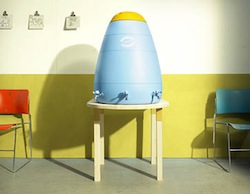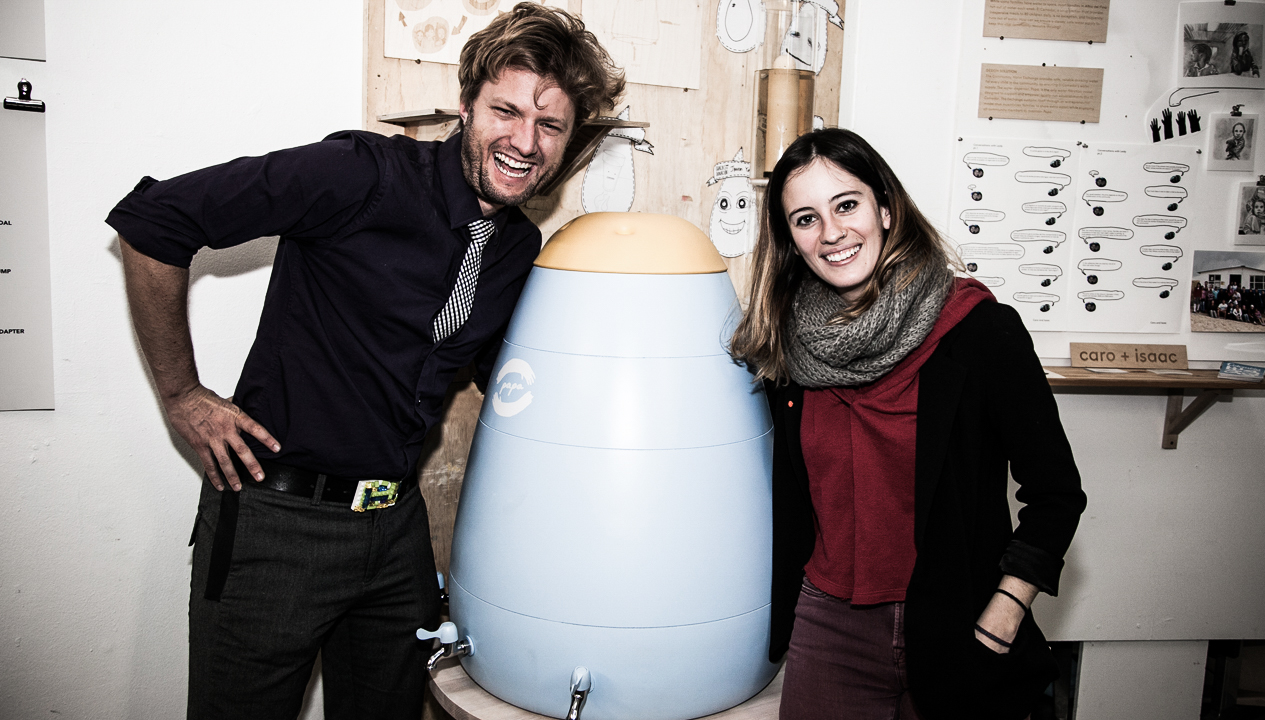In this repost from Art Center’s Dotted Line, Alumnus Isaac Oaks offers a student’s perspective on the Safe Agua Colombia project. Continuing to build on the investigations and experiences of the award-winning Safe Agua Chile and Safe Agua Peru projects, Oaks traveled as part of a student team to Altos del Pino, in Bogotá, Colombia, to co-create innovative technical design solutions with local families, seeking to overcome some of the social issues created by water poverty and to make an impact through resulting products and systems.
The Designmatters Safe Agua project fostered my personal exploration into the area of community design co-creation. The experience began with an immersive 12-day research trip to outskirts of Bogotá, Colombia, in fall 2013, where I was among a small team embedded with families in the asentamiento of Altos del Pino. Our focus was designing for the all too common problem of extremely limited water supply. Because they are only provisionally connected to the official water grid, each household has access to a small hose of running water for just one hour every eight days. This highly restrictive schedule became the catalyst for our designs.
We began to develop a strategy to navigate many complex or socio-economic considerations. This strategy was inspired by design research methodologies from IDEO Method Cards and a workshop with Frog Design’s David Sherwin about their Collective Action Toolkit. We categorized our research into macro and micro areas. The micro topics focused on creating a lifecycle analysis; understanding how people transport, store, use and re-use water. After gaining a functional understanding at a small scale, our focus changed to the macro topics. These included an understanding of daily life, values and aspirations, which guided our insights into the core dilemmas of the community. After spending two weeks hearing stories, I started to understand that we all share many of the same values of hard work, hope and reciprocity.
Upon returning to California, my partner and I aimed to create a system that would alleviate the social strain on the community associated with water availability. The solution needed to address specific problems with quantitative impacts. Our goal was to find a solution that was radically affordable and scalable to millions of people, while remaining economically and environmentally sustainable. From our research, we understood that the community wanted to create a social network of support, but there was nothing in place to facilitate its development. We developed a “cistern of the commons” to manage and filter donated water.

Oaks helped design Papa, a communal cistern aimed to address local needs for sustainable communal access to clean water
I returned to Colombia in spring 2014 as a representative of Art Center, conducting tests for 12 unique solutions/projects on behalf of my classmates. These projects ranged from a pop-up business to capturing and purifying rainwater. Our goal was to field-test the initial prototypes and gain critical feedback directly from the local stakeholders. To receive the greatest value from each project, I encouraged community members to become designers for the day, using their feedback to continually evolve each project. A co-creation feedback loop commenced between community members and myself, pushing each proposal well beyond anything that could have been achieved remotely, in California. This field-testing helped capture the true needs and aspirations of the families and confirmed the merits of each design.
